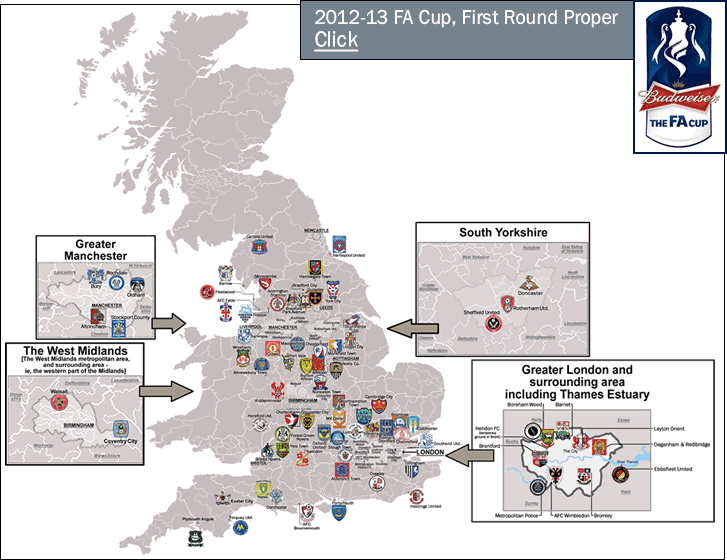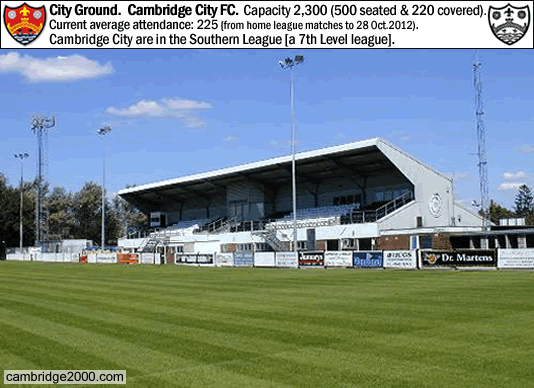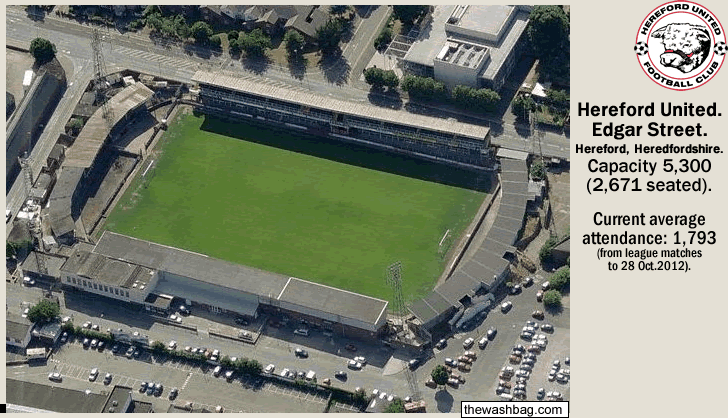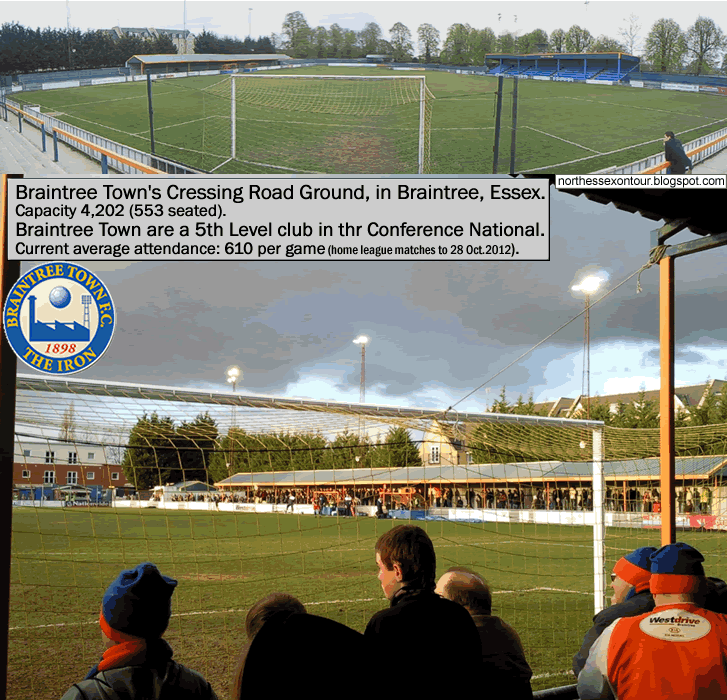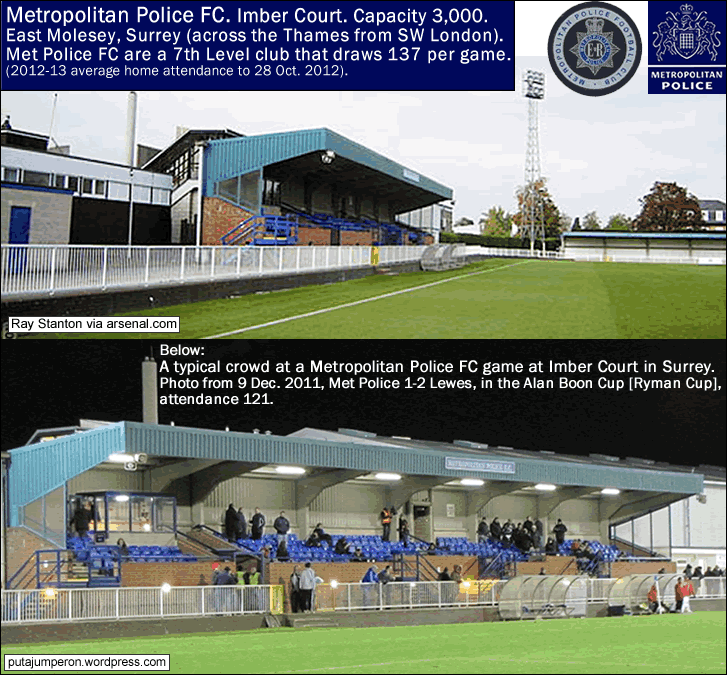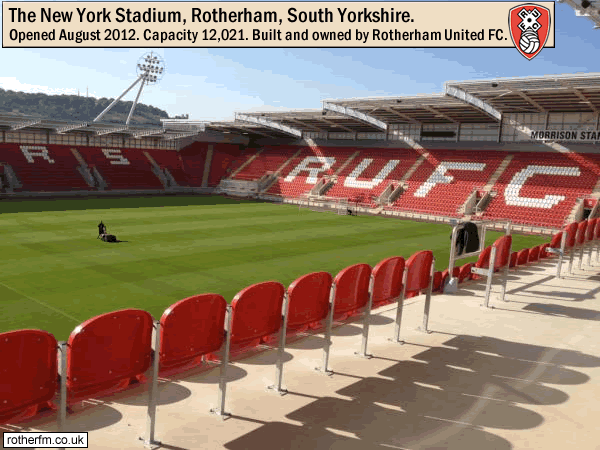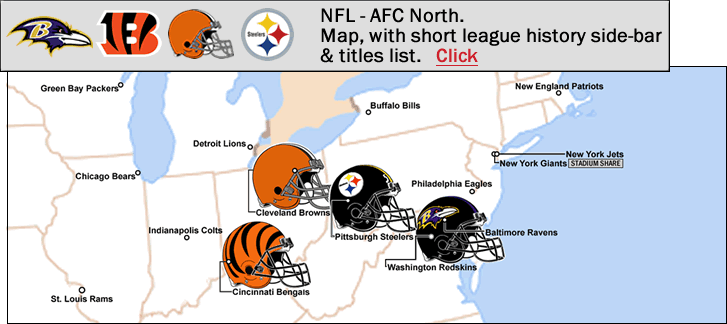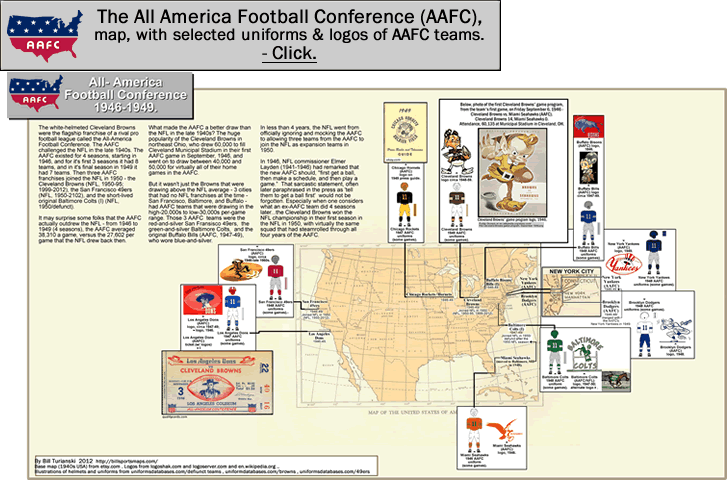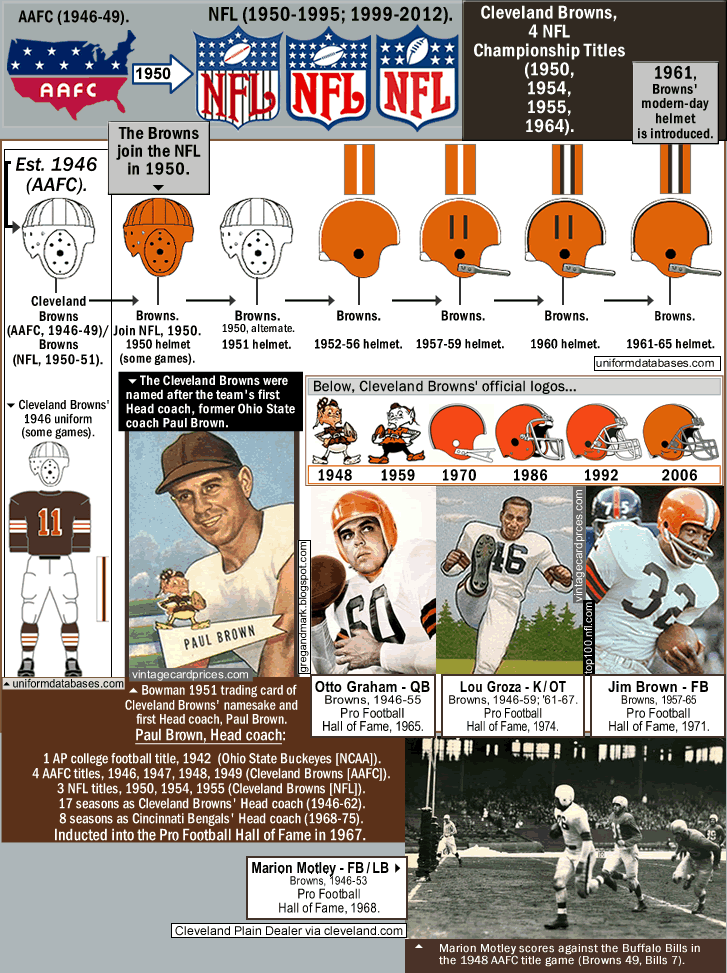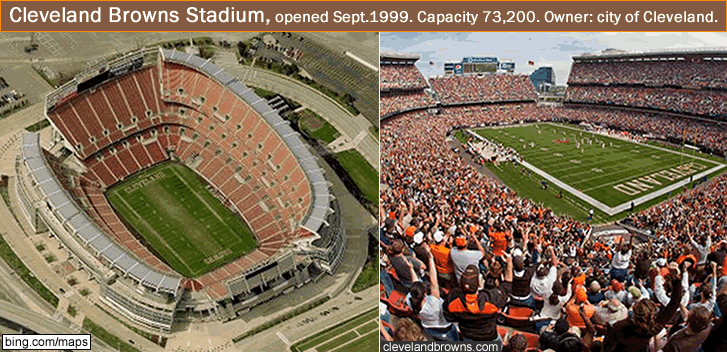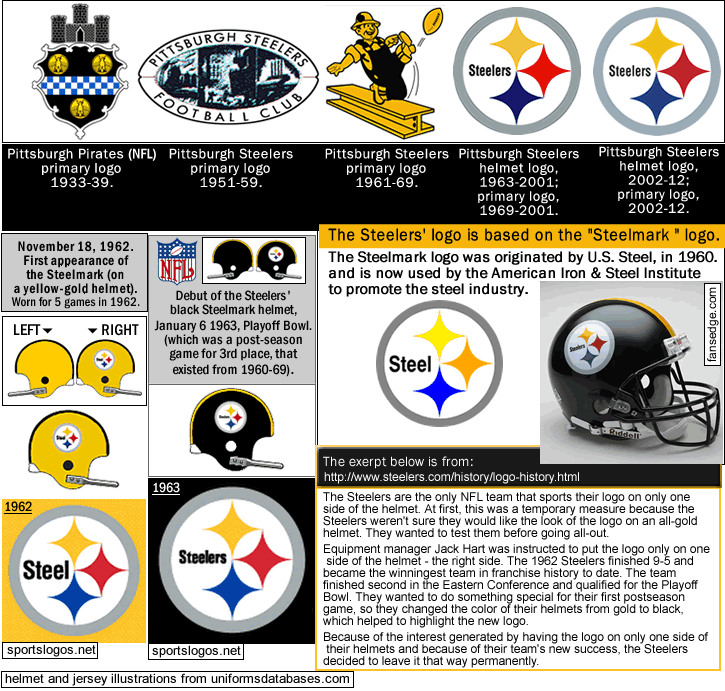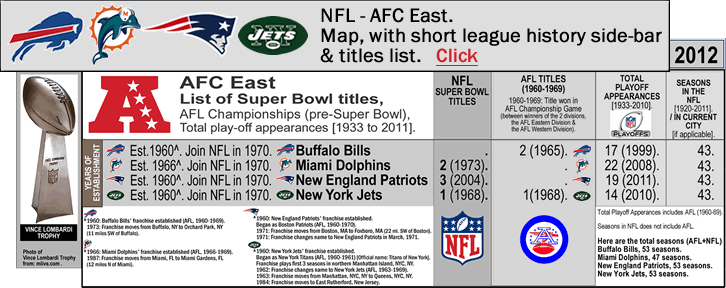
NFL, AFC East – Map, with short league-history side-bar & titles list
Photo of Vince Lombardi Trophy from mlive.com.
…
Logo and helmet history of the 4 teams (Bills, Dolphins, Patriots, Jets).
.

Buffalo Bills logos & helmet history (1960-2012)
Helmet illustrations above from Gridiron Uniform Database.
Photo of Buffalo Bills’ replica helmet from amazon.com/Riddell-Buffalo-Bills-Replica-Helmet.
The Buffalo Bills were established in the AFL (1960-69), and became an NFL franchise in 1970, as part of the 1970 AFL/NFL merger. The Bills are named after the old All-America Football Conference (AAFC) team called the Buffalo Bills (I) (AAFC, 1947-49). {See this, ‘AAFC‘ (logoserver), and see Buffalo Bison/Bills [AAFC] illustration further down}. {‘Franchise nicknames‘ (profootballhof.com).} The Buffalo Bills, either version, are named after world-famous 19th century Wild West showman Buffalo Bill Cody. The phrase Buffalo Bill was still well-known and in popular currency then (back in 1947). That’s because Buffalo Bill was not just famous in America, he was world-renowned. Sure, most of the young folks today would probably not know of Buffalo Bill Cody and his Wild West revues, but in 1947 they sure would have, and some older folks back in 1947 would have actually gone to Buffalo Bill Cody Wild West revues – the guy toured widely and extensively and elaborately and to huge popularity, in the US and in Canada, and in Europe, for 30 years – from the 1880s all the way up to the first decade of the 1900s. As the narrator in the 9-minute documentary video in the following link says, Buffalo Bill Cody was America’s first superstar.
‘ Buffalo Bill “Beyond the Legend” (9:03 Video uploaded by Little Bighorn Productions at youtube.com).
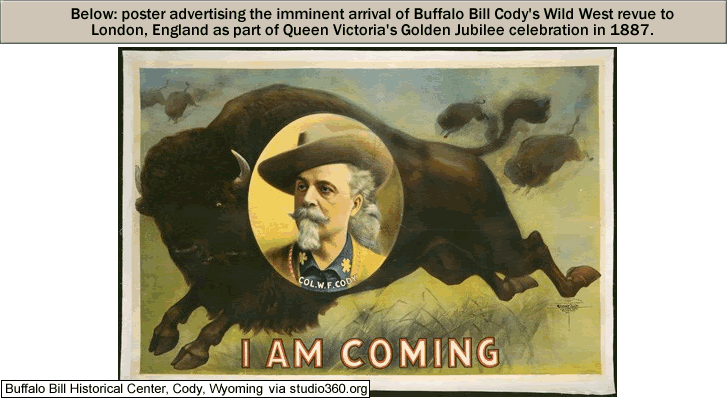
Imagr credit above – Buffalo Bill Historical Center, Cody, Wyoming via http://www.studio360.org/2011/jul/15/.
So what I’m saying is that in 1960, when the Buffalo Bills (II) were established, the only way you would not have instantly thought of Buffalo Bill Cody if you heard the phrase “Buffalo Bills” would be if you lived in a cave. So how about it, Buffalo Bills’ organization, how about finally placing a representation of old Buffalo Bill Cody in red-and-blue on, say, a Bills’ shoulder-patch-logo or something – the Buffalo Bills’ organization should advertise the fact that the Bills are named after Buffalo Bill Cody – America’s first superstar – rather than what the organization has been doing for the last 50 years, which is to never, ever acknowledge the origins of their nickname. The fact that the Buffalo Bills are named after Buffalo Bill Cody is a cool bit of history that the franchise should be proud of.
…
The Buffalo All-Americans and their 2 disputed NFL titles
The Buffalo Bills are the second NFL franchise from Buffalo, NY. The first was the Buffalo All-Americans, a charter member of the APFA [NFL], who played from 1920 to 1929, finishing off as the Buffalo Bisons (I), before folding in late 1929 at the onset of the Great Depression. The Buffalo All-Americans wore orange and black {here are the uniforms of the NFL’s 1921 Buffalo All-Americans (gridirons-uniforms.com/[Defunct Teams/Buffalo All Americans 1921])}. The Buffalo All-Americans have claimed two disputed NFL titles – the first two league titles in 1920, and in 1921. The Buffalo All-Americans officially finished in 3rd place in the first NFL [APFA] season in 1920, at 9-1-1. But with modern NFL tie-breaking rules, which the NFL instituted in 1972 – but not retroactively – the 1920 Buffalo All-Americans would be co-champions (at .814 Pct.) with the official champions of 1920, the Akron Pros (NFL, 1920-26), who went 8-0-3. [In the NFL, from 1920 all the way until 1971, ties were, illogically, thrown out of the computation when arriving at a team's winning Pct. Finally, in 1972, the NFL revised this, and ties were established as a .500 Pct. result (ie, half a win and half a loss)].
In 1921, in the second season of the APFA [NFL], the Buffalo All-Americans went 9-1-2, while the Chicago Staleys (the present-day Chicago Bears) went 9-1-1. The rules of the league stipulated that the Buffalo All-Americans and the Chicago Staleys should have been co-champions (because, as mentioned, ties were thrown out). But the league owners, influenced by the lobbying of Chicago Staleys’ player/owner George Halas, voted to award only the Chicago Staleys the 1921 title, fabricating, on the spot, a new rule that said a second match-up between two teams which were tied in the standings “counted more”. Here is what it says at ‘1921 APFA season/Def Facto championship game‘(en.wikipedia.org)…{excerpt} “The league then implemented the first ever tiebreaker: a rule, now considered archaic and removed from league rulebooks, that states that if two teams play multiple times in a season, the last game between the two teams carries more weight. Thus, the Chicago victory actually counted more in the standings, giving Chicago the championship. Buffalo sports fans have been known to refer to this, justly or unjustly, as the “Staley Swindle,” and have cited it as the first evidence of a sports curse on the city.”…{end of excerpt}.
The Buffalo All-Americans beat the Chicago Staleys 7-6 in Buffalo on Thanksgiving Day in 1921, then lost to Chicago 10-7 in Chicago on December 4, 1921 – and then later on the league voted that the second game “counted more”. After the fact. Changing the rules after the fact is by definition crooked.
{From subjectsummary.com/1921-NFL-Championship-controversy [see the 10th and 11th points, halfway down this page]. {éxcerpt}…”Halas decided to declare that the title belonged to Chicago and began to persuade the other owners in the league to give his Staleys the title. The new rule stated that a rematch counts more than a first matchup, which handed the championship to Chicago.”…{end of excerpt}.
…
The Buffalo Bills (I) of the AAFC (franchise est. 1946/ merged with Cleveland Browns in 1950 when the Browns joined the NFL)
The All-America Football Conference (AAFC) was formed in 1946. It competed with the NFL for 4 seasons, and actually outdrew the NFL (see 6 paragraphs below at AAFC pdf). Then, after the 1949 season, 3 of the 7 teams from the AAFC joined the NFL for the 1950 season. Two present-day NFL franchises came from the AAFC – the Cleveland Browns and the San Francisco 49ers. The other team that went from the AAFC to the NFL in 1950 was the original Baltimore Colts, who wore green-and-silver and who only played one NFL season (1950) before folding {1950 NFL Baltimore Colts [(I)/defunct] (gridiron-uniforms.com/Defunct teams)}. [Note: the Baltimore Colts (II) [colors: blue-and-white] were formed in 1953 as an NFL expansion team]).
The Buffalo AAFC team formed in 1946 was originally called the Buffalo Bisons (II) (1946), then in their second season, the franchise, which was owned by James Breuil of the Frontier Oil Company, had a local contest to pick a new name. The winning entry – Buffalo Bills – worked a tie-in with the team-owner’s company in that both referred to the Wild West. Here is an excerpt from that page titled ‘Nicknames’ at the Pro Football Hall of Fame site {‘Nicknames‘ (profootballhof.com)}…
{excerpt} …”BUFFALO BILLS – Buffalo’s team in the All-America Football Conference (AAFC) in 1946 was the Bisons. In 1947 a contest was held to rename the team, which was owned by James Breuil of the Frontier Oil Company. The winning entry suggested Bills, reflecting on the famous western frontiersman, Buffalo Bill Cody. Carrying the “frontier” theme further, the winning contestant further offered that the team was being supported by Frontier Oil and was “opening a new frontier in sports in Western New York.” When Buffalo joined the new American Football League in 1960, the name of the city’s earlier pro football entry was adopted.”…
{end of excerpt}.
So in their second season, in 1947, the Buffalo AAFC franchise changed their name to the Buffalo Bills (I). With the 1947-49 AAFC Buffalo Bills, the similarity to world-famous 19th century Wild West showman Buffalo Bill Cody was used as a play on words in their logo (see 5 paragraphs below). The Buffalo Bisons/Bills of the AAFC never won a title in the four seasons that the AAFC played – the Cleveland Browns won all four AAFC titles. After Buffalo’s first, poor season in 1946, when the Buffalo Bisons went 3-10-1, the Buffalo Bills (I) were competitive, going 8-4-2 in 1947; and then 7-7-0 with a league final appearance in 1948 (losing to the Browns 49-7 in Cleveland in the 1948 AAFC title game); and in their last season of 1949, the original Bills went 5-5-2. The Buffalo Bills of the AAFC drew very good for the time-period, drawing in the high-20,000s-to-30,000-per-game-range, which was higher than the NFL average for that time, which was 27,602 per game for the 1946-49 time period. But the NFL refused to allow the AAFC Buffalo Bills (I) to join the league in 1950, because they insisted Buffalo was too small and the climate was too cold for it to support an NFL franchise. In other words, the NFL conveniently ignored the fact that there was a team already in the NFL that was from a city that was smaller and colder than Buffalo – Green Bay. Although 4 owners voted against the Buffalo Bills joining the NFL in 1950, the opposition to Buffalo entering the NFL in 1950 coalesced around two owners – Chicago Bears’ owner George Halas and Los Angeles Rams’ owner Dan Reeves.
Here is Wikipedia’s entry on the subject…
{excerpt from ‘Buffalo Bills (AAFC)/’ at en.wikipedia.org}…”There was some controversy over Buffalo’s exclusion from the enlarged NFL. Buffalo had experienced more success on the field and at the gate than Baltimore, and the original three-team plan would have left the league with 13 teams, not only a odd number, but also one considered to be bad luck. The move had left Buffalo as the only AAFC market without an NFL team post-merger, and one that had outdrawn the NFL average in fan attendance. With that in mind, Buffalo fans produced more than 15,000 season ticket pledges, raised $175,000 in a stock offering, and filed a separate application to join. When the vote to admit Buffalo was held on January 20, 1950, a majority of league owners were willing to accept Buffalo; however, George Halas, who had a longstanding animosity toward Buffalo’s previous NFL franchise, and Dan Reeves blocked the Bills’ entry into the league. League rules required a unanimous vote, but the vote, which included the other AAFC teams that were already admitted, was only 9-4 in favor. League commissioner Bert Bell had already put out a schedule based on the 13 teams, and Reeves cited as his excuse for voting against admission was simply that “it was silly to vote in a new city without first having a good idea where my teams would be playing and when.”
…{end of excerpt}.
The man who made the Chicago Bears, George Halas, the man whose initials are on the sleeves of the Chicago Bears’ jersey to this day, twice shafted the city of Buffalo – first in 1921 by convincing the other owners to make up, after the fact, a new rule to deny the Buffalo All-Americans a rightful share of the 1921 title, and then in 1950 by voting against Buffalo entering the NFL. Hey Buffalo fans, please remember this…we have been screwed by George Halas’ Chicago team twice. The Buffalo Bills of the AAFC were drawing higher than the NFL-league-average, but the NFL didn’t want them? Where is the logic in that? The NFL in 1950 did not want a team (from an unfashionable city) that was outdrawing the NFL average. Is that a business plan, or is that restraint of trade? It was restraint of trade. So the NFL owners barred the high-drawing Bills from entering the league, but let in the original Baltimore Colts of 1947-50, even though they knew the original Baltimore Colts were very shaky financially and did not have good support – and then those Baltimore Colts folded after the 1950 NFL season and entered history as a confusing footnote.
Buffalo was the 14th-biggest city in America in 1950, with a metopolitan-area population of around 895,000 {see this, ‘Top 20 U.S. Metropolitan Areas by Population, 1790-2010, Approximate Populations in Thousands‘ (peakbagger.com).
Here is the 1950 NFL final standings {1950 NFL (pro-football-reference.com}.
So, in 1950, in the 13-team NFL, the top 11 of the top 12 most-populous cities in America had NFL franchises (Boston did not have an NFL team in 1950, but had failed in the past to support 3 different NFL franchises there [see the New England Patriots' section further down in this post] and both New York City and Chicago had 2 NFL teams each), while 13th-largest city then – Minneapolis, MN – did not. But the Minneapolis-based Minnesota Golden Gophers were a big college football team that had won a consensus national title in 1940 and played in a 52,000-capacity stadium, whereas there has never, ever been a large college football program in western New York to compete with a pro team in Buffalo (11 years later in 1961 the Minnesota Vikings joined the NFL). And the NFL said that Buffalo – the 14th-largest city in the USA in 1950 – was not big enough? The position the NFL owners had to barring Buffalo in 1950 looks more like restraint of trade than any sort coherent plan for expansion. And when you factor in the city of Rochester 60 miles east of Buffalo, and the nearby Canadian cities of Hamilton and Toronto (both of which are less than 2 hours by car away from Buffalo), the catchment population (defined as one-hours’ drive away, meaning Rochester+Buffalo+Hamilton, Ontario) for a Buffalo franchise was well over a million-and-a-half people in 1950 (Buffalo’s 1950 population being around 895,000 as listed in the previous link), and the Buffalo Bills’ 60-mile-radius market is now well over 2.7 million people [current population figures...Buffalo, NY metro population, around 1.1 million; Rochester, NY metro population, around 1.0 million; Hamilton, ON, Canada metro population, around 700,000; plus one-and-a- half hours' drive away is Toronto, ON, Canada, with around 5.1 million {all 2011 figures}).
Here is what the pro football historians' newsletter called the Coffin Corner, in an article by Stan Grosshandler (from 1980), has to say about the Buffalo Bills of the AAFC being denied entry into the NFL in 1950...
{excerpt}..."Buffalo, a success both at the gate and on the field, was denied entry and owner Jim Breuil had to settle for a share of the Cleveland team. One of the odd facts of the war [between the NFL and the AAFC] is that the loser, the AAFC, averaged 38,310 a game while the NFL averaged only 27,602…”{end of excerpt).
pdf, THE COFFIN CORNER: Vol. 2, No. 7 (1980). “ALL-AMERICA FOOTBALL CONFERENCE”, By Stan Grosshandler.
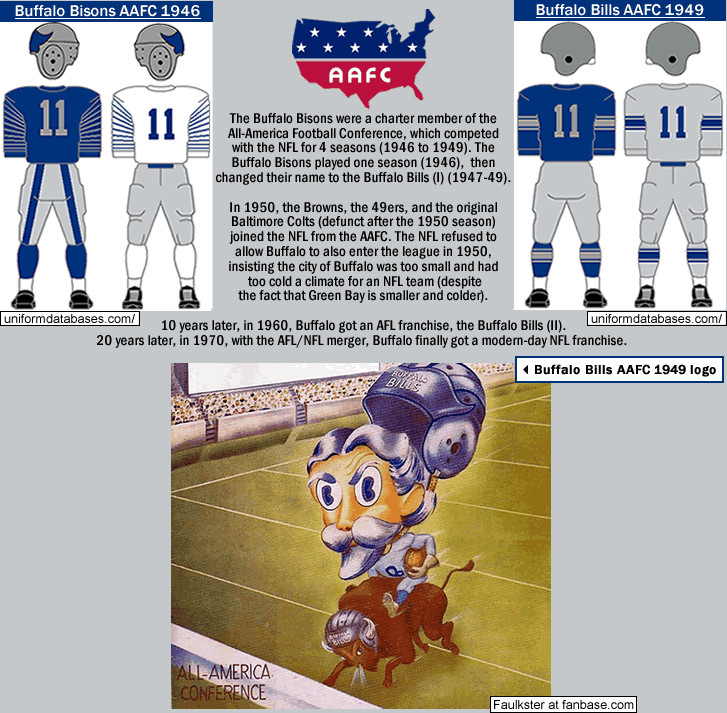
Image credits above –
Buffalo Bisons (II) AAFC 1946 uniforms and Buffalo Bills (I) AAFC 1949 uniforms from uniformdatabases.com/defunct.html. Buffalo Bill Cody logo [Buffalo Bills (I) AAFC 1947-49 logo], uploaded by Faulkster at fanbase.com/photo/406607.
…
The Buffalo Bills (II) (est. 1960, AFL, 1960-69/ joined the NFL in 1970 as part of the AFL/NFL merger)
The Buffalo Bills (II) were established in the American Football League in 1960, as a charter member of the then-8-team league. The Bills’ owner was, and still is Ralph Wilson, Jr. (who as of 2012 is 93 years old). Wilson was heir to an automobile franchise in Michigan. At the time (circa 1959), Ralph Wilson was a part-owner of the NFL’s Detroit Lions. Wilson’s link to the Lions is shown by the Bills’ first color scheme – for their first two seasons the Buffalo Bills of the AFL wore silver-and-blue, like the Lions. [It might be a coincidence or it might not be, that the Bills of the AFL had the same color scheme that the previous pro football team in Buffalo had a decade before. I could not find any facts about this one way or the other. My guess is that Wilson & Co. knew that the Buffalo Bills of the AAFC wore blue-and-silver, which made it even more logical for the Bills of 1960 to carry on the colors of the last pro football team in the city and acknowledge their owner's former ties to the Detroit Lions simultaneously]. The Buffalo Bills switched from blue-and-silver to blue-white-and-red in 1963, and that year they also introduced their red-standing-bison logo, which they placed on their now-white helmets. Blue jerseys remained from the last color scheme, a slightly brighter shade of royal blue, now with red and white trim. The Bills kept white helmets when they changed their logo in 1973 to their blue-charging-bison-with-diagonal-red-streak logo. This has been the Buffalo Bills’ logo since 1973 all the way up to 2012. In 1984, the Bills changed their helmets from white to red because the bulk of the teams in their division then (Colts, Dolphins, and Patriots) all wore white helmets and it made it hard for Bills’ quarterbacks to see their receivers down-field. Red helmets were worn by the Bills from 1984 to 2010, then the Bills returned to their early 1970s look of the charging bison crest on a white helmet with classy retro-look grey facemask.
The Buffalo Bills of the NFL – that is, the Buffalo Bills from 1970 to the present-day – have never worn silver-and-blue. So here is my throwback uniform concept – every year since 2007, the New York Jets wear, as an alternate uniform, their franchises’ original colors of navy-blue-and-gold a couple times a year…so why not have the Buffalo Bills wear, as an alternate uniform, the striking 1946 Buffalo Bisons’ uniforms, complete with the silver-and-blue flying-wing helmet (you can also see the 1946 Buffalo Bisons’ uniform in the illustration above, top left). Or at least use the following as a Bills’ throwback uniform – the 1960 Buffalo Bills’ uniforms, which featured a silver helmet with players’ number in blue block-serif font {1960 Buffalo Bills [uniforms] (uniformdatabase.com).
…
Like the Buffalo Bills (I) of the AAFC before them, the Buffalo Bills of the AFL played in the city of Buffalo’s run-down and poorly-maintained War Memorial Stadium, aka “the Rockpile” (which was opened in 1937, and was partially demolished in 1988). The antiquated War Memorial Stadium evoked such a bygone era that they filmed most of the baseball-game-scenes in the 1984 film The Natural, starring Robert Redford, at War Memorial Stadium. War Memorial Stadium had a capacity of 46,500, but that was hard to substantiate, seeing as how many of the bleacher seats were falling apart. Writer Brock Yates said that the stadium “looks as if whatever war it was a memorial to had been fought within its confines.” Yeah, the place was a dump – but it was our dump. It gave the Bills a pretty good home-field advantage, because visiting players would invariably be shocked and stressed out by the appallingly inadequete facilities there. The Bills played at War Memorial Stadium for all 10 seasons of the AFL and for their first 3 seasons as an NFL team (1970-72).
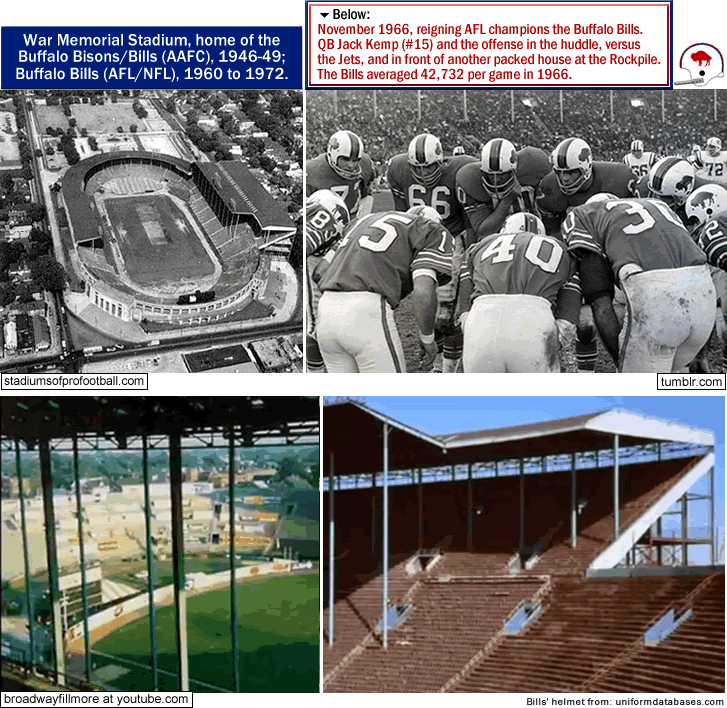
Image and Photo credits above – aerial black-and-white photo from stadiumsofprofootball.com. Photo of 1966 Bills in the huddle at War Memorial Stadium from tumblr.com. Two screenshots of video of War Memorial Stadium in Buffalo uploaded by broadwayfillmore at youtube.com.
Then in 1973 the Bills moved 11 miles south-east, out to the suburbs, and into an 80,000-capacity stadium in Orchard Park, NY. Now called Ralph Wilson Stadium, the stadium was originally called Rich Stadium, and was one of the first examples of a pro sports team using naming rights to pull in revenue ['Rich Products' (en.wikipedia.org)]. At the time (the mid 1970s and the 1980s), the Bills played in one of the largest stadiums in the NFL.
After a 1999 renovation, the capacity of the Ralph Wilson Stadium was reduced by about 4,500, and subsequent renovations have put the present-day capacity at 73,079. That makes the Buffalo Bills’current stadium capacity [2012] the 11th-largest in the 32-team NFL {see this list with clickable columns at en.wikipedia.org/List of current National Football League stadiums}. The capacity reductions were done in part so the Bills wouldn’t fall victim to the NFL’s draconian black-out rule. These days, despite the fact that the Bills pretty much suck, they hardly ever get blacked out. So there’s that. But Buffalo has the longest streak in the NFL without making the playoffs (12 years now). And to be perfectly frank about it, the wide right kick, the 4 straight Super Bowl defeats, and the soul-destroying failure by the Bills’ kickoff team to stop the kickoff-return-via-lateral-pass by the Tennessee Titans in the 1999 playoffs will never really go away. Unless the Bills finally win a Super Bowl.
Since 2008, Buffalo has played one of their 8 home games each season in Toronto, Ontario, Canada, at the retractable-roof stadium Rogers Centre [formerly called Skydome] (capacity 54,000 for football), which is to American Bills fans a constant nagging reminder that the Buffalo Bills could very well, in some dystopian future, end up as the Toronto Bills.
The Buffalo Bills won 2 AFL titles (1964, 1965).
The Bills are 0-4 in 4 Super Bowl appearances [lost in the 1990 season to the Giants, lost in the 1991 season to
the Redskins, lost in the 1992 season to the Cowboys, and lost in the 1994 season to the Cowboys).
...
...

Miami Dolphins' logo and helmet history (1966-2012)
Helmet illustrations above from Gridiron Uniform Database.
Photo of Miami Dolphins' replica helmet from cardiacsports.net.
The first pro football team in Florida was the short-lived 1946 Miami Seahawks of the AAFC. The Miami Seahawks were a charter member of the AAFC and wore orange and white. They were a disaster. But the team never really got a shot at establishing itself, because the ridiculous 1946 AAFC schedule really hurt the team - the Miami Seahawks had to play 7 of their first 8 games on the road. By the time the Seahawks were set to play their last 6 games, all of them at home, the team was 1-7, and attendance dropped off from 28,000 (in their first home game) to just around a 9,000 average for those later 6 home games. The ownership was also the most under-capitalized in the AAFC, plus it hurt the franchise that Miami was not at all a very big city in the 1940s (it was even smaller than Buffalo back then). With the Miami Seahawks over $350,000 in debt, the AAFC front office stepped in and took over the franchise after the 1946 season, and moved the Miami Seahawks to Baltimore, where the franchise was originally planned to be (before stadium issues arose). The Miami Seahawks became the (original) Baltimore Colts (I) (AAFC, 1947-49/ NFL, 1950 / defunct), who wore green-and-silver and, like the latter incarnation of the Colts, played at Memorial Stadium in Baltimore, and who, in 1950, joined the NFL along with 2 other AAFC teams, the Cleveland Browns and the San Francisco 49ers. But these Baltimore Colts also went bust, lasting just one NFL season (1950). [The city of Baltimore got a more stable NFL franchise 3 years later when, in 1953, the Baltimore Colts (II) were formed (NFL, 1953-1983/ moved to Indianapolis as the Indianapolis Colts, NFL 1984-2012).
...
Miami Dophins (est. 1966 as an AFL expansion team/ joined the NFL in 1970 as part of the AFL/NFL meger)
It would be another 19 years before Florida got another pro football team, and this time Miami got an AFL franchise after the NFL prevented the city of Atlanta, GA from acquiring one. In 1965, NFL commissioner Pete Rozelle learned that the AFL was intent on placing a team in Georgia, and had awarded a franchise to a group of investors contingent upon the city of Atlanta approving the deal. So Rozelle literally took the next plane flight down to Atlanta, and made the city choose between an AFL or an NFL franchise. Back then, with the instability of the AFL, that choice would be a no-brainer and Atlanta opted for the NFL - hence the Atlanta Falcons (NFL, 1966-2012). So this unclaimed AFL franchise, for $7.5 million, went to a group in Miami that was headed by lawyer/politician Joe Robbie and entertainer Danny Thomas. A contest for the name of the new team got over 19,000 entries, with 622 entries suggesting the name "Dolphins". The Miami Dolphins' team colors were selected as "aqua and coral". The Dolphins' turquoise blue has morphed a number of times - it started as more of a greenish-blue that was a bit dark {here, 1966}, then from 1970 to 1979 it was a much more lighter blue-green {here, 1970), then in the 1980 to 1990 period it turned much darker and into a more greenish hue that resembled teal {here, 1984}, then from 1991 to '96 {1995, here} it got lighter again and looked more like it's 1970s-era light turquoise, then when the team re-did it's color scheme in 1997 to turquoise-orange-navy blue, the jerseys got way more darker and teal-like again {1998, here. You can see all these uniform changes that the Dolphins have had through the years at the Miami Dolphins' page at the Gridiron Uniforms Database (gridiron-uniforms.com, who have changed their goddamn png addresses THREE FREAKING TIMES IN 3 FREAKING YEARS [WTF you guys?]).
The Dolphins are one of the few NFL teams that regularly wears white as its home jersey (many other teams do it maybe once or twice a season {see this, ‘White at Home in the NFL‘ {uni-watch.com)}, and Dallas always does it). In 1972, the Dolphins started their tradition of wearing white jerseys – for home day games – in order to give a bit of a disadvantage to visiting teams, who would have to wear their dark jerseys in the hot Florida sun. Here are the uniforms the 17-0 Miami Dolphins wore each game in 1972 {1972 Miami Dolphins (gridiron-uniforms.com/1972_Miami)}.
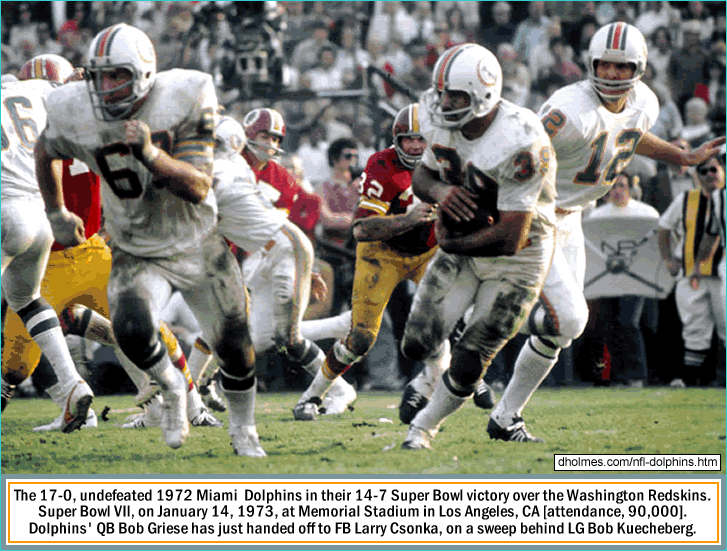
Photo credit above – unattributed at.dholmes.com.
Coincidence or not, the start of this tradition for the Dolphins of wearing white jerseys at home games coincided with the 1972 Dolphins’ perfect season. The 1972 Dolphins are the only NFL team to go undefeated in the regular season, then go on to win the Super Bowl. The Dolphins then went on to win the Super Bowl in the following season of 1973, becoming the second NFL team to win back-to-back Super Bowl titles, after Green Bay (since then, Pittsburgh – twice, San Francisco – twice, Dallas, and New England have also won back-to-back Super Bowl titles).
The Dolphins’ Head coach during this era was Don Shula, who eventually became the most successful Head coach in professional gridiron football history in terms of total games won. Don Shula won 347 NFL games as head coach, and retired as Dolphins’ head coach in 1995. Shula’s Dolphins teams posted losing records in only 2 of his 26 seasons as the helm.
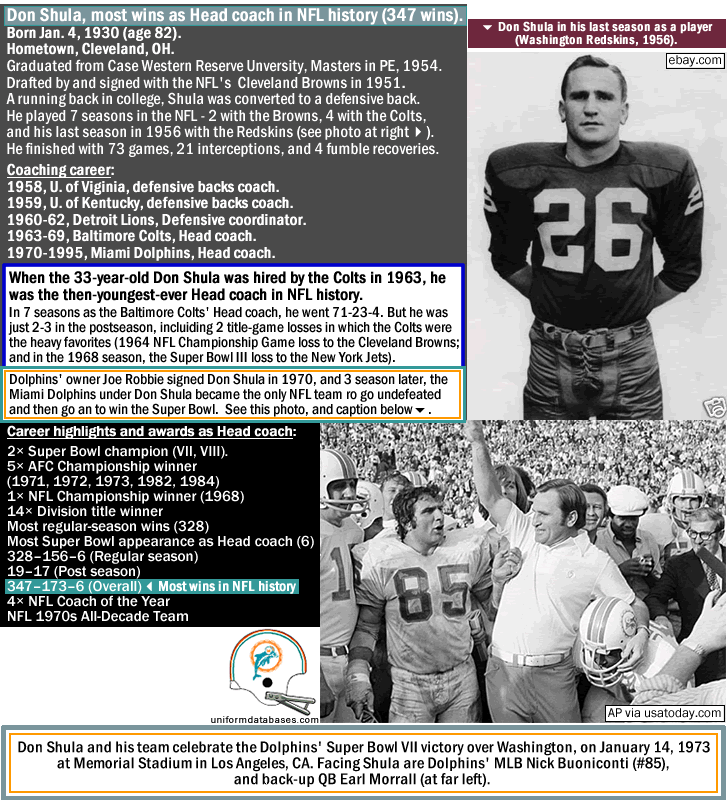
Photo and Image credits above – Don Shula as Redskins player, ebay.com. AP file photo via USA Today. Dolphins’ helmet from uniformdatabases.com/teams/1972_Miami.html.
Six future Football Hall of Fame members played for Miami during the 1970s, including fullback Larry Csonka, quarterback Bob Griese, and linebacker Nick Buoniconti. ‘[Miami Dolphins'] Pro Football Hall of Famers‘ (en.wikipedia.org). The Dolphins, after the Super Bowl titles in the 1972 and 1973 seasons, have never won another Super Bowl title, but they came close a couple times in the 1980s when Pro Football Hall of Famer Dan Marino was their QB – losing in the Super Bowl to the Redskins in the 1982 season, and then losing in the Super Bowl to the 49ers in the 1984 season.
The Dolphins’ first stadium was the famous, but eventually run-down and obsolete Orange Bowl stadium, which was located east of downtown Miami in the city’s Little Havana district. This stadium opened in 1937 and was demolished in 2008, and was also home to the Miami Hurricanes’ college football team, as well as the huge annual college football bowl game, The Orange Bowl, from 1938 to 1995. For most of the latter part of it’s lifetime, the Orange Bowl had a capacity of around 72,000, and it hosted no less than 5 Super Bowls (the Orange Bowl stadium hosted Super Bowls 2, 3, 5, 10, and 13). The Miami Dolphins played their first 21 seasons at the Orange Bowl stadium (from 1966-69 in the AFL, and from 1970-1986 in the NFL). Then in 1987 the Dolphins moved 12 miles north to the suburb of Miami Gardens, FL and into Joe Robbie Stadium, which has a capacity of around 75,000 and, after 6 name changes, is now known as Sun Life Stadium.
There is an urban legend that every year all the surviving members of the 1972 17-0 Miami Dolphins meet up and pop the champagne and celebrate, after the last team in the NFL that season loses its first game (meaning the 1972 Dolphins’ perfect season has yet again failed to be duplicated). This is false. Granted, one year, 3 of the ex-1972-Dolphins who live in Coral Gables, FL – Bob Griese, Dick Anderson, and Nick Buoniconti – met in a parking lot there and popped a bottle of champagne to celebrate after the last undefeated team that year finally lost a game, but it only happened once. Nevertheless, the urban myth took off from there and now it is a hackneyed trope of some media outlets (such as the Jim Rome radio show) that the 1972 Dolphins are bitter old men glorifying in the lack of perfection of the other NFL teams. Here is the fact-checking and myth-debunking site Snopes.com’s page on the subject, ‘Miami Neat‘. The Dolphins players from the 1972 team might not be making a big deal of that 17-0 perfect season, but the Miami Dolphins’ front office sure was for a while – in both 1997 and 2002, the Dolphins featured a front-jersey-logo-patch that was in honor of the 1972 team – for the 25th anniversary of the perfect season (in 1997), and for the 30th anniversary of the perfect season (in 2002). You can see them at the Dolphins’ logo & helmet history {here, again}.
Miami Dolphins: 2 Super Bowl titles (1972, 1973).
The Dolphins are 2-3 in Super Bowl appearances [lost to the Cowboys in the 1971 season, lost to the Redskins in the 1982 season, and lost to the 49ers in the 1984 season].
…

New England Patriots’ logo and helmet history (1960-2012)
Helmet illustrations above from Gridiron Uniform Database.
Photo of New England Patriots’ replica helmet from cardiacsports.net.
There were several NFL teams that had played in Boston, Massachusetts before 1970. The first was the Boston Bulldogs, who lasted only one NFL season (in 1929). This team was actually the relocated and hard-luck Pottsville Maroons, of Pottsville, PA (NFL, 1922-28), who, like the Buffalo All-Americans, have a claim for a disputed NFL title (in 1925). The next NFL franchise in Boston was the Boston Braves/Redskins, from 1932 to 1936, who started out in dark-blue-and-gold colors {Boston Braves’ 1932 NFL uniform (gridiron-uniforms.com/redskins)}, then switched to burgandy-and-gold in their second season when they changed their name to the Boston Redskins {Boston Redskins 1933 NFL uniforms gridiron-uniforms.com/redskins)}. This Depression-era NFL team played at two different Major League Baseball stadiums in Boston – first at Braves Field (later called Nickerson Field) and then at Fenway Park. The team had lousy support – even in the Boston Redskins’ final season (1936), when they reached the NFL Championship Game (losing to the Bears), they could barely draw 10,000 per game at home. This situation resulted in the Boston Redskins’ franchise moving to Washington, DC after the 1936 season, where they promptly won their first NFL title in their first season in the nations’ capital in 1937, and where they refused to integrate and employ black players on their team until threatened with Civil Rights legal action by the Kennedy Administration in 1961, and where, to this day, they maintain their racist nickname of the Washington Redskins (NFL, 1937-2012).
Then there was the Boston Yanks. It is kind of hard to believe, but there actually was once a professional sports team from Boston that was called the Yanks. Their owner was a New York City-based talent agent named Ted Collins who wanted to locate the franchise at Yankee Stadium in The Bronx, NY (the franchise finally got to Yankee Stadium 6 years later, but not for long). The Boston Yanks (NFL, 1944-48) wore dark-green and yellow {here are the Boston Yanks’ ghastly 1946 NFL uniforms (gridiron-uniforms.com/defunct teams). The Boston Yanks played from 1944–1948 to a lopsided losing record of 14-38-3, and to vast public indifference (and for a good reason…naming your team “the Yanks” in Boston would be like trying to start a football (soccer) club in Manchester called Liverpool United). After the 1948 season the Boston Yanks moved to New York City, to become the New York Bulldogs (NFL, 1949-50), then the New York Yanks (NFL, 1950-51), but in NYC, the franchise never had a shot at success because they had to compete with the popularity of the New York Giants’ NFL team. So after the 1951 season, the franchise was revoked and folded by the NFL. The franchise was reported by the NFL to have been “sold back” to the league, but that most-likely-bogus claim by the NFL has no substantiation. The NFL was no money-maker back then.
…
Boston Patriots (est. 1960, AFL, 1960-69/ joined the NFL in 1970 as part of the AFL/NFL merger; changed name to New England Patriots, 1971-2012)
The New England Patriots began as the Boston Patriots – the last of the 8 original franchises of the AFL (1960-69). Principal owner of the franchise was Billy Sullivan, a former sportswriter and PR-man for the Boston Braves (the former MLB team), as well as the PR Man for Boston College athletics, and for Notre Dame athletics. The new team’s nickname was the result of the most popular suggestion in a local naming contest, and honored the Revolutionary War heroism of Bostonians. The logo was an angry-looking Revolutionary War-era soldier in Minuteman militia garb and a tri-corner hat, in a three-point footballl stance, about to hike a football. The Boston Patriots’ colors were red-white-and-blue, and they wore white helmets and red home jerseys. In their first season, the Boston Patriots sported a confusing look on their helmets – their first helmet-logo was a floating blue tri-corner hat above the players’ number in red {see it here, Boston Patriots Helmet Logo (1960) (sportslogos.net). But the next season, 1961, and all the way up to 1992, the Boston Patriots and then the New England Patriots sported on their helmets their three-point-stance-Minuteman logo (the fellow in the logo was dubbed “Pat Patriot”). In 1993, the Patriots changed their colors to silver-navy blue-red (the official colors of the New England Patriots are nautical blue, new century silver, red, and white). The Patriots’ silver helmets feature a logo that is the grey-skinned floating head of an American Revolutionary War soldier in profile, wearing a tri-corner hat which inexplicably has red and white ribbons streaming out of the back of it. For some reason, the face of the Patriot soldier on the present-day New England Partiots’ helmet looks very much like Elvis Presley.
The early years of the Boston Patriots saw the team hampered by not having a solid and dependable stadium to play their home games in. The Patriots played in 4 different venues in and around Boston before they moved out to the suburbs in 1971. The Patriots’ first venue was the home of the former National League team the Boston Braves, now called Nickerson Field (which these days, in a very different configuration, is owned by Boston University and is now home to the Boston University Terriers’ men’s and women’s lacrosse and soccer teams). From 1963 to 1968, the Boston Patriots played at Fenway Park. That might sound great, but, owing to the different field dimensions, football played in baseball parks is usually a bad fit, as you can see by this undated photo (probably from late 1960s) of Fenway Park as a football venue (football.ballparks.com). In 1969, the Boston Patriots played outside of the city center of Boston, in the suburb of Chestnut Hill (6 miles west of downtown Boston), at Boston College’s Alumni Hall, which only had a capacity of 26,000 back then. The vagabond Patriots moved again the following year of 1970, which was their first in the NFL following the AFL/NFL merger. Their fourth venue, in 1970, was the 30,000-seat Harvard Stadium (in the Alston neighborhood of Boston, which though owned and operated by the Cambridge, Massachusetts-based Harvard University, is on the other side of the Charles River and is within the city limits of Boston). The Patriots played 7 NFL games in this stadium, then finally got a purpose-built stadium of their own the next year, in 1971. The stadium was a 60,000-seater (originally called Schaeffer Stadium, then Sullivan Stadium, then finally called Foxboro Stadium). Because of the stadium’s distance from Boston, the franchise tried to re-name their team the Bay State Patriots (after the nickname of the Commonwealth of Massachusetts). But the NFL wisely put the kibosh on that strange moniker, and so, in March 1971, the franchise, more sensibly, re-named itself the New England Patriots. The only problem was that their new stadium in Foxborough, Massachusetts and the new stadium on the same site that replaced it in 2002 (Gillette Stadium, capacity 68,000) was and still is 21 miles SE of Boston and is actually closer to Providence, Rhode Island (20 miles NE of Providence) than it is to downtown Boston. Plus there is only one main thoroughfare (and only 2 lanes) from the stadium back to Boston and it turns the road into a nightmare traffic jam after every home game.
The newly re-named and re-located New England Patriots started out as a basement-dweller (1971-75), but turned into a mediocre to decent to very good football team thereafter. Under Head coaches Raymond Berry (in the 1985 season) and then under Bill Parcels (in the 1996 season), the Patriots made it to two Super Bowls in a losing capacity, before finally winning a Super Bowl title (in their 42nd season as a franchise) in the 2001 season, under Head coach Bill Belichick. After a one-season-gap, and still with the manners-challenged-but-tactical-genius Belichick as Head coach, the Patriots won back-to-back Super Bowl titles in the 2003 and 2004 seasons. The Patriots, still under Belichick, have made 2 more Super Bowl appearances since then, but though favorites in both games, lost both to the New York Giants (in the 2007 and the 2011 seasons). In the last eleven seasons (2001-11), the Patriots have made the playoffs 9 times, and are one of the strongest franchises in the NFL these days, which only makes Boston-centric sports fans even more insufferable.
…
The Patriots…they were cheaters back then, and they are still cheaters today…
The Snowplow Game, December 12, 1982: Patriots 3, Dolphins 0.
Below is my all-time favorite moment in New England Patriots’ history…the Snowplow Game of 1982. In NFL lore, the Snowplow Game refers to a regular-season game played in a snowstorm between the Dolphins and the Patriots on December 12, 1982, that finished 3-0, thanks to the snowplow of a Schaeffer Stadium grounds crew worker named Mark Henderson. The incident happened during a blizzard, on an icy and frozen field, with 4:45 left to go in the 4th quarter of a scoreless tie between the New England Patriots and the Miami Dolphins. With 4th down for the Patriots and with the ball on the Dolphins’ 7-yard-line, Patriots’ Head coach Ron Meyer ordered stadium grounds crew worker Mark Henderson to make one crucial modification to his job that day, which was, for the sake of visibility, to periodically clear the yard-lines of snow. So on his snowplow tractor, as he was clearing the 10-yard-line, Henderson made a quick veer to the spot where Patriots’ kicker John Smith was about to attempt a field goal. The referees did not prevent this. Moments later, Smith converted the 33-yard FG. {Here is a youtube video of the play,’Snow Plow Game 1982 Miami Dolphins vs New England Patriots‘ (2:14 video uploaded by insidetheredzone at youtube.com)}. The Patriots held the Dolphins for the remainder of the game. Dolphins’ Head coach Don Shula reacted furiously, but the call stood, and the final score was New England 3, Miami 0.
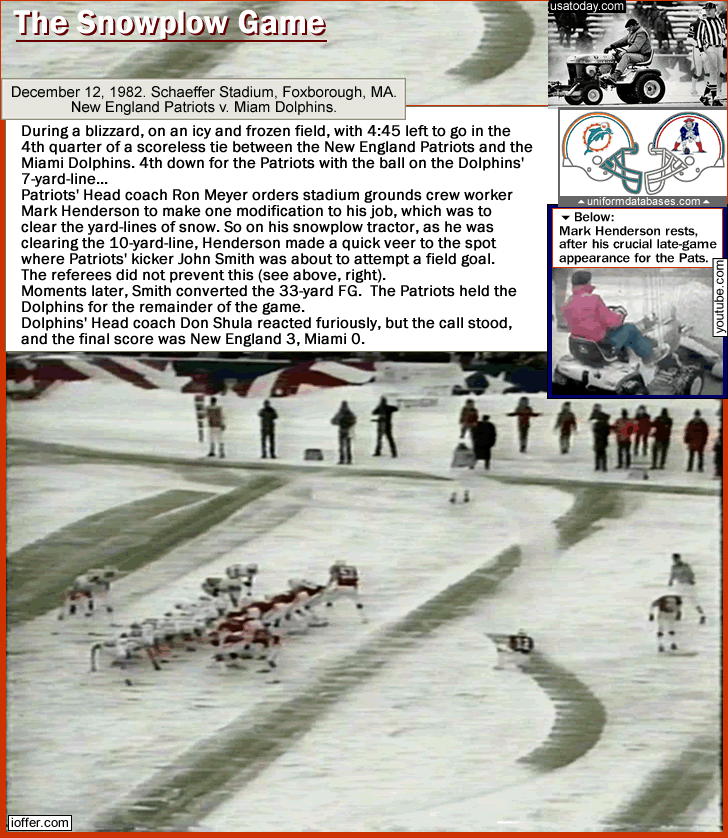
Photo and Image credits above – black-and-white photo of Henderson on snowplow tractor with ref glancing at him is unattributed at usatoday.com. Helmets are from Gridiron Uniform Database at gridiron-uniforms.com/1982. Screenshot of television image from.youtube video uploaded by insidetheredzone at youtube.com. Screenshot (large image above) of kick attempt immediately prior to the snap is unattributed and is from a Google Image search preview of a former item at ioffer.com [ here ].
…
New England Patriots: 3 Super Bowl titles (2001, 2003, 2004).
The Patriots are 3-4 in Super Bowl appearances [lost to the Bears in the 1985 season, lost to the Packers in the 1996 season, lost to the Giants in the 2007 season, and lost to the Guiants in the 2011 season].
…

New York Jets logos & helmet history (1960-2012)
Helmet illustrations above from Gridiron Uniform Database.
Photo of New York Jets’ replica helmet from cardiacsports.net.
The New York Jets’ franchise began life as the New York Titans, a charter member of the AFL (1960-69). The Titans wore navy blue and gold their first year (1960), then navy blue and yellow in 1961 and 1962 {New York Titans 1962 AFL uniforms (gridiron-uniforms.com/1962_NYTitans). Because a new NYC stadium was not yet ready (Shea Stadium in Queens, NYC, NY would not open until 1964), the Titans had to play in the old and decrepit Polo Grounds in northern Manhattan Island, which was the former home of the New York Baseball Giants before they bolted to San Francisco, California in 1958, and was also future home (in 1962 and 1963) of the 1962 Major League Baseball expansion team the New York Mets.
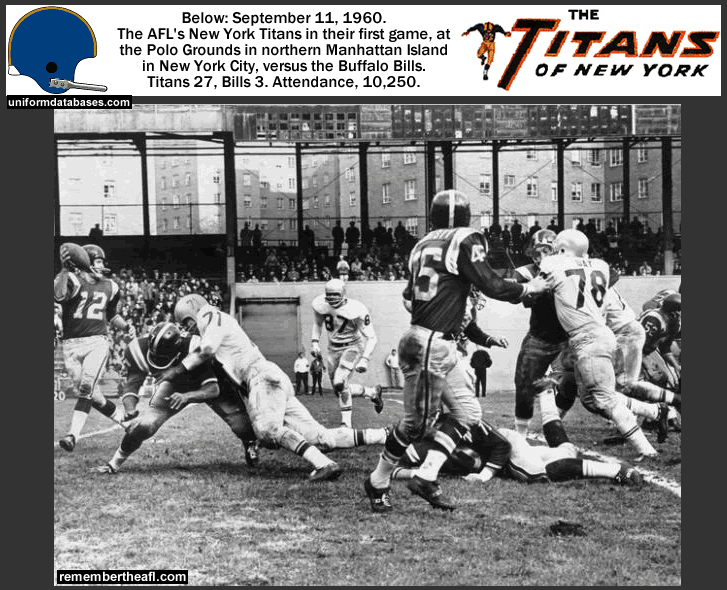
Photo and Image credits above – remembertheafl.com/TitansJets.htm.
NY Titans 1960 helmet from Gridiron Uniform Database.
In three years flat, before the franchise was purchased and re-named and completely turned around by a consortium headed by Sonny Werblin and including Leon Hess, the New York Titans managed to become over 1 million dollars in debt ($1 million in 1963 equals around $7.5 million in 2012 terms {see this, CPI Inflation Calculator}). The Titans were under-capitalized and run by someone – ex-Washington Redskins’ radio announcer Harry Wismer – who was out of his league as a major league pro sports owner. Here is a an excerpt – a quote from former New York Titans/Jets linebacker Larry Grantham – from a New York Times article from October 14, 2007, by Larry Anderson, ‘Blue and Gold, Then Green and White as the Titans Became the Jets‘
…“ What was it like playing for the Titans?” linebacker Larry Grantham recalled… “Well, we dressed in a rat-infested locker room at the old Polo Grounds, and when Wismer announced there were 30,000 people at the games, maybe there were 10,000 people, if that many “….{end of excerpt}.
By 1962, Wismer’s checks were bouncing and players weren’t being paid, and Dallas Texans’ (future Kansas City Chiefs) owner Lamar Hunt actually payed the salaries of Titans players at one point (that’s how important a New York City-based franchise was to the AFL). By the Titans’ third and last season, in 1963, Wismer was trying to get the few Titans’ fans attending home games to move up all the way to the seats in the front rows at the Polo Grounds, so the television cameras wouldn’t show so many empty seats.
A five-man syndicate headed by Sonny Werblin saved the team from bankruptcy, purchasing the Titans’ for 1 million dollars. The new ownership group changed the team’s name to the New York Jets and changed their colors to green-and-white (now dark-green-and-white). The new owners hired Weeb Ewbank as the GM and Head coach in 1963. In 1964, in their first season at Shea Stadium, the Jets went a mediocre 5-8-1 but drew an AFL-record-at-the-time 42,710 per game. Then attendance rose even more as the team improved, to 62,433 per game in 1967 when the Jets went 8-5-1, led by the league’s passing-yardage-leader, the 3rd-year QB Joe Namath, a western Pennsylvania native and former Alabama Crimson Tide star. The next season, 1968, five seasons into the grandfatherly Weeb Ewbank’s tenure as GM and Head coach, the Jets finally broke through – big time.
In 1968 Weeb Ewbank and quarterback Joe Namath led the Jets to prominence when the AFL’s New York Jets defeated the heavily-favored Baltimore Colts of the NFL in Super Bowl III (in January, 1969 at the Orange Bowl in Miami, Florida) and solidified the AFL’s position in the world of professional football. It also made the NFL wake up and realize that not only was the AFL no joke league, but that the AFL was a serious rival whose best team just beat the NFL’s best team. Burn.
In the illustration below, you can see, at the upper-left, Namath and his offensive line in a Jets’ pass play during Super Bowl III; and at lower-right you can see one of Namath’s legendary pool-side press conferences there in Miami in the days leading up to the game; and at the bottom of the illustration is an image of the cover of the official game program for Super Bowl III. [Note: some of the images below were found at the incredible photo-and-fact-filled website called Remembering The AFL.com (remembertheafl.com), which is highly recommended.].
Super Bowl III, Orange Bowl, Miami FL, January 12, 1969.
New York Jets (AFL) 16, Baltimore Colts (NFL) 7.

Photo credits above – nydailynews.com/sports/football/super-bowl-game-by-game [Gallery]. Namath pool-side & Super Bowl III game program from remembertheafl.com/SuperJets.htm [1968 Jets' season Gallery].
The End.
Just kidding, but actually, in terms of the good news, that’s pretty much where the story of the New York Jets ends, because ever since January 1969 when Broadway Joe Namath very publicly guaranteed victory over the Colts in Super Bowl III, then delivered that shock upset victory which turned the pro football world upside-down, it’s all been busted opportunities for the Jets, with paltry success (no more Super Bowl appearances) and a fan-base filled with seething resentment over being forced to exist right under the shadow of the New York Giants. But let’s get back to 1963, and discuss the Jets’ stadium history.
In 1963, Harry Wismer’s debt-laden New York Titans were purchased by the Sonny Werblin group. The year after the ownership change, the team finally moved into the new Shea Stadium out in Queens, NY, where the NY Jets played for 20 seasons (1964 to 1983). Shea Stadium came to be after a 5-and-a-half-year period which saw the city of New York try numerous means to find a Major League Baseball team to replace the devastating loss in 1958 of two MLB teams – the Brooklyn Dodgers and the New York Baseball Giants, both of whom moved to California. Here is Ballparks.com’s summary of the events leading to Shea Stadium construction, via 2 excerpts from their page on ‘(Shea Stadium‘ (ballparks.com}…
{excerpt}…” Shea Stadium is named after William Alfred Shea, an attorney who was instrumental in acquiring a new team for New York following the city’s abandonment by the Giants and the Dodgers in the 1950s. Appointed chairman of the Baseball Commission by then New York mayor Robert Wagner, Shea first tried to get the Cincinnati Reds, the Pittsburgh Pirates, or the Philadelphia Phillies to move to New York, but had no luck. He then tried to organize a third major league, the Continental League, in 1958, with a franchise for New York, but the league died before a single game was played. In 1960, National League owners decided to expand to 10 teams and awarded franchises to Houston and New York. There were rumors that New York would be rejected unless it guaranteed construction of a new stadium. At Shea’s suggestion, Wagner sent telegrams to each owner with such an assurance, and the Mets started play in 1962. “…
{excerpt}…” Shea Stadium is the noisiest outdoor ballpark in the majors because it is in the flight path of La Guardia Airport. The story goes that when the city scouted out stadium sites in 1962, they went during the winter, when flight paths into La Guardia are different, so they never anticipated the aircraft noise. ”
…{end of excerpts}
Shea Stadium (capacity 60,000 for football) was a stadium that ticked off all the boxes for a poor fan experience, starting with the fact that it was built within a web of highways literally miles away from an actual restaurant or tavern or even a convenience store and had zero ambiance or charm. But the worst thing about Shea Stadium (I know, I saw 7 Mets games there in the early 1990s) was the fact that you needed ear-plugs there because it sat on the heavily-used flight paths of jet planes taking off from and landing at nearby La Guardia airport. Every couple of minutes – over 100 decibels roaring above you.
…
Jets’ nickname
There are conflicting explanations for why the New York Jets are called the Jets. Here is one explanation {see this, specifically the side-bar at the left, at ‘New York Jets‘ (sportsecyclopedia.com), which says “Named in 1963 after the Jets that flew overhead at Shea Stadium, their home starting in 1964 from nearby La Guardia Airport. It also gave them a name that rhymed with Mets, who they shared Shea Stadium with at the time.”} Then there is what the Pro Football Hall of Fame site says in the chart which I have already linked to in this post, ‘Nicknames‘ (profootballhof.com), which says, “New York’s original AFL team was called the Titans. When Sonny Werblin took over the franchise in 1963, he changed the team name to Jets to reflect the modern approach of his team and the star-studded performances he hoped his team would produce.”. That second explanation sounds like total BS public-relations-double-talk. How could it be such a coincidence that the New York Mets were formed in 1962, then one year later, a pro football team in New York City changes its name to the Jets, which just happens to rhyme with Mets, both of whom just happen to be moving to a new stadium the following year, which just happens to be next to an airport, where actual jets can be found? That “coincidence” is frankly impossible. The Jets were named to rhyme with the Mets and to signify that they played in a stadium next to an airport. End of. So, why does it say otherwise in the Pro Football Hall of Fame site? Because the folks there at the official Pro Football Hall Of Fame website are lying. I have a theory…the Jets finally moved out of Shea Stadium after the 1983 season mainly because of all the onerous scheduling restrictions that the city of New York (the stadium’s owner) put on the Jets. The Mets were primary tenant and got first dibs on any given scheduling date – in fact, each season, the Jets couldn’t play there until the Mets finished their last home-stand of the season in late September. …Here is an excerpt from the ‘Shea Stadium‘ page at en.wikipedia.org,
{excerpt} …” For most of the Jets’ tenure at Shea, they were burdened by onerous lease terms imposed at the insistence of the Mets. Until 1978, the Jets could not play their first home game until the Mets’ season was finished. Even after that year, the Mets’ status as Shea’s primary tenants would require the Jets to go on long road trips (switching Shea from baseball to football configuration was a rather complex process, involving electrical, plumbing, field and other similar work). The stadium was also not well maintained in the 1970s. The Jets moved to Giants Stadium for the 1984 season, enticed by the additional 15,000+ seats offered there “.
…{end of excerpt}.
So my theory is that there was so much resentment within the New York Jets’ organization towards the New York Mets’ organization, and to the stadium authority, over the problems that the Jets had with their tenancy at Shea Stadium, that the Jets’ organization stopped saying their nickname ever had anything to do with the Mets, or with Shea Stadium’s location next to an airport, and they came up with that BS about the “fact” that Sonny Werblin “changed the team name to Jets to reflect the modern approach of his team and the star-studded performances he hoped his team would produce”.
I’ll leave the final word on the subject to someone who contributed an answer to the question of “Why did the Jets change their name from the Titans?” at Jetsinsider.com/ forum from Aug. 2006…
Why did the Jets change their name from the Titans? …’The New York Titans changed their name with new ownership and a team that was going to play their games in Shea right next to Laguardia Airport. A Jet which is fast and sleek only made sense. It also had the “ets” as did the Mets”…
- ganooch at Jetsinsider.com, here jetsinsider.com/forums (commenter #9, ganooch). Thanks, ganooch, you said it the best.
So like the Giants had done in 1976, the Jets moved to New Jersey as well. The Buffalo Bills are and have been the only NFL team since 1984 that plays its home games in the State of New York.
Giants Stadium in East Rutherford, NJ was opened in 1976, and had a capacity of 80,000. The Jets’ move in 1984 to their local rival’s stadium was a bit humiliating, to say the least, for the Jets’ organization and especially for its fans, and goes a long way to explaining the massive chip-on-the-shoulder that the average Jets fan has. In 2001, the Jets came up with a solution to the embarrassing situation that they played in another NFL team’s stadium. No, they didn’t get their own stadium – an attempt at a getting a stadium on the West Side of Manhattan proved to be impossible. So starting in 2002, they spent millions per year on something else. They spent $750,000 per game covering over every blue wall and every Giants’ logo on the stadium’s surface in Giants Stadium with huge green vinyl coverings and banners that had Jets logos and Jets’ signage. Covering the entire blue Giants’ signage and wall surfaces with Jets’-green vinyl banners was pretty desperate, and didn’t hide the fact to any NFL fans watching on television that the New York Jets were the only NFL team that played in another NFL team’s stadium (see the article at the following link, ‘Home Is Wherever the Jets Hang Their Banners‘ (nytimes.com [article by Richard Lezin Jones, from October 17, 2004]).
I don’t know where all those big green vinyl Jets banners are today, but since 2010, the Jets haven’t had to use them. Since 2010, the Jets have played, still along with the New York Giants, in MetLife Stadium, capacity 80,566, a stadium built adjacent to the former site of Giants Stadium. Both teams contributed funds to build the stadium, and it was built by and is owned and operated by the MetLife Stadium Company, LLC, a joint venture between the New York Giants and New York Jets. And crucially, for the sake of Jets fans everywhere, the stadium is distinguished by an interior lighting system, first employed in Allianz Arena in Munich, Germay, that switches colors on all walls and surfaces within and without the stadium depending on which team is playing at home.
The New York Jets won 1 AFL Championship Game (1968).
New York Jets: 1 Super Bowl title (1968).
The Jets are 1-0 in Super Bowl appearances.
___
Thanks to Chris Creamer’s Sports Logos Page, for many of the old logos and for dates of logos, http://www.sportslogos.net.
Thanks to Logo Shak, for some old logos, http://www.logoshak.com.
Thanks to The Helmet Project, for dates of helmets and info, http://www.nationalchamps.net/Helmet_Project/.
Thanks to Helmets, Helmets, Helmets site, for helmets on the map page, and for dates of helmets, http://www.misterhabs.com/helmets.
Thanks to JohnnySeoul at each NFL team’s page at en.wikipedia.org, for 2012 NFL uniforms, such as ‘AFCE-Uniform-BUF.PNG‘.
Thanks to the Coffin Corner Newsletter for AAFC and AFL attendance figures, pdf – ‘AFL Attendance 1960-69‘.
Thanks to Remember The AFL.com (remembertheafl.com), which is now on my Blogroll.
.
Special thanks to Gridiron Uniform Database, for allowing billsportsmaps.com use of their NFL uniforms illustrations.
